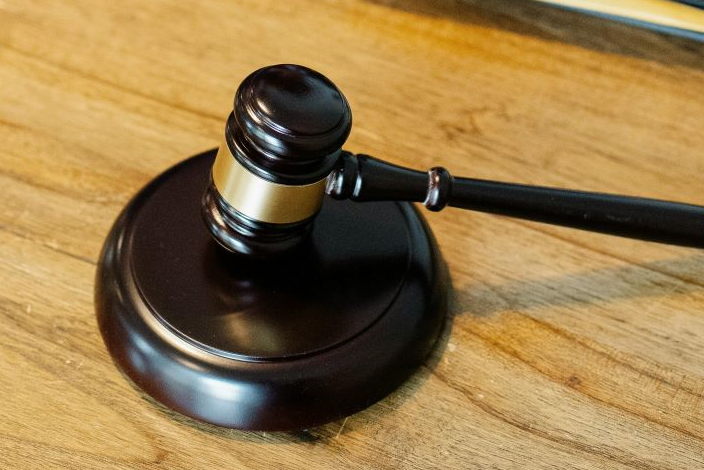In cases like the chlormequat lawsuits, plaintiffs argue that manufacturers are responsible for negligently selling unreasonably dangerous products that make them legally responsible for product liability.
Chlormequat is a chemical that the agricultural industry uses to regulate crop growth, and recent studies link it to certain dangers, including developmental and reproductive harm. Learning more about this chemical may help you determine if you qualify for a class action lawsuit against the manufacturers of chlormequat.
If you would like to open a case involving an unreasonably dangerous product, call 312-600-0000 to schedule a free consultation with the Chicago mass torts attorneys at Ankin Law.
How Is Chlormequat Used in Agriculture?
Chlormequat is a pesticide that many American facilities use to regulate ornamental plant growth, with other potential uses in the growth of oats and other grains. The purpose of this chemical is to improve plants’ hardiness and harvesting operations.
Regulations or Restrictions on Chlormequat in Illinois
There are regulations impacting the use of chlormequat in Illinois and across the country. Although the U.S. doesn’t allow the use of chlormequat in the growth of food crops, the Environmental Protection Agency (EPA) does allow for limited exposure of food products to chlormequat and the importation of chlormequat-grown food products that have experienced limited exposure to the chemical.
In 2020, the EPA increased the limit of oat grain chlormequat exposure to 10 to 40 parts per million (ppm), and in 2023, the agency received an application for domestic chlormequat use.
Despite the current regulations in place for chlormequat, certain groups and individuals are attempting to prove the dangers associated with chlormequat exposure, even in small doses below EPA recommendations.
What Are the Health Risks Associated With Chlormequat Exposure?
Recent studies have linked chlormequat exposure to health issues in animals, which could translate into health issues for humans. Specifically, studies found that chlormequat chloride side effects involve reproductive and developmental harm in animals, such as:
- Delayed development and puberty
- Lower male reproductive organ weight
- Reduced sperm motility
- Decreased testosterone levels
One study from the Environmental Working Group (EWG) determined that four out of every five people in the U.S. likely have chlormequat in their systems due to exposure to various crops and food products. The EWG reasons that this kind of exposure in people could lead to the same type of harm that animals suffer, making it important to minimize the level of exposure to chlormequat and prevent it from entering food products and other consumables.

Because of the purported health risks associated with chlormequat exposure, people have begun filing class action lawsuits against the manufacturers of products exposed to the chemical.
What Are the Chlormequat Lawsuits?
The lawsuits involving chlormequat involve two plaintiffs in California who claim that General Mills and Quaker Oats have sold products containing “dangerous levels” of the chlormequat chemical.
The lawsuit against General Mills specifically pertains to its Cheerios products, which plaintiffs allege contains levels of chlormequat that exceed safe doses, based on the recommended 30 parts per billion (PPB) according to the EWG, which is far lower than the recommended dose under the EPA.
Meanwhile, the Quaker Oats lawsuits claim that the company’s Chewy granola bars, other granola products, and oatmeal contain dangerous levels of the chemical.
Both lawsuits claim that these companies sourced oats from Western Canada, where farmers can legally use chlormequat to grow their food crops, crops which Quaker Oats and General Mills then imported into the US for use in their food products.
While both manufacturers claim that their manufacturing and sourcing practices are safe and meet all regulatory standards, the plaintiffs argue that their products could cause harm based on the studies discovering the dangers of chlormequat exposure in animals.
Class Action Lawsuits vs. Mass Torts
The current lawsuits arising from chlormequat exposure both fall under the category of class action lawsuits. It’s important to understand the difference between mass tort and class action lawsuits to determine which to file and what each case will entail during the legal process.
Here is a brief breakdown of both types of cases:
Class Action Lawsuits
These cases normally involve two or more plaintiffs that want to sue for certain damages against one or more defendants for negligent practices. They may have as many as millions of individual plaintiffs who have a single plaintiff representing them.
Throughout the legal process, courts look at all plaintiffs involved as a single collective plaintiff.
Mass Torts
Alternatively, some people may file a mass tort instead of class action lawsuits, which work similarly to class action lawsuits in that several people may sue one or more negligent individuals or entities.
At the same time, mass torts acknowledge that each plaintiff may have suffered from the liable party’s negligence in different ways. For instance, some individuals may suffer different types and degrees of harm from chlormequat exposure, leading to varying damages among the plaintiffs.
Ultimately, if you fall under a single class of plaintiffs, you might join a class action lawsuit against a defendant. Conversely, if you suffer a different level of harm and qualify for a certain amount of compensation that others in a class action lawsuit might not, you might benefit from filing a mass tort.
What Is an Unreasonably Dangerous Product?
In cases like the chlormequat lawsuits, plaintiffs argue that manufacturers are responsible for negligently selling unreasonably dangerous products that make them legally responsible for product liability.
An unreasonably dangerous product is any type of product that has a defect of design, manufacture, or marketing that can cause harm to consumers even when using products as intended.
Manufacturers, retailers, or others could be liable for unreasonably dangerous products if they fail to manufacture products to reasonable safety standards, use faulty designs that put consumers at risk, or fail to warn users of the potential dangers of their products.
Oat-based products involved in the chlormequat cases could qualify as unreasonably dangerous if the lawsuits find that manufacturers failed to warn of the use of chlormequat in their imported crops or neglected to source crops that used safe levels of chlormequat.
Filing a Chlormequat Lawsuit
If a product you’ve consumed contains chlormequat, and you wish to file a lawsuit against liable manufacturers or other parties, you may be able to launch a class action lawsuit.
The following are the basic steps involved in this process:
Consult an Attorney
The first step you’ll want to take is to consult with a mass torts lawyer who may be able to represent you in a lawsuit. An attorney can evaluate your case in an initial consultation and determine what kind of legal options you have when it comes to filing either a mass tort or class action lawsuit.
He or she will review the facts of your case and determine what kind of compensation you might be able to recover, taking the subsequent steps to file a lawsuit and provide representation if he or she decides to take on your case.
Filing a Complaint
The next step would involve filing a complaint with the corresponding court in the case. Specifically, the prospective plaintiff must qualify as part of the class associated with the case or have grounds for a mass tort, depending on the circumstances.
If you join a class action lawsuit, you will remain an unnamed plaintiff under the representative plaintiff in the case.
Determining Damages
Plaintiffs in class action or mass tort lawsuits may be able to recover different types of damages from negligent defendants, including:
- Economic damages like medical bills, therapy costs, loss of income or earning capacity, and costs associated with certain disabilities
- Non-economic damages such as physical pain and suffering, psychological distress, and loss of companionship or consortium
- Punitive damages that result from gross negligence or malicious intent, such as manufacturers acknowledging the dangers of chlormequat while still failing to disclose its contents in their products
Ultimately, your attorney would be able to help identify and calculate all the damages associated with your case. If the damages you suffer are similar to those involved in a class action lawsuit, you might join this class and recover the same amount of compensation as other plaintiffs. However, if your damages are unique to your case, and you suffered a different level of harm from an unreasonably dangerous product, your attorney might opt to file a mass tort instead.
Settling the Case
During class action or mass tort cases, defendants and plaintiffs may decide to settle out of court to avoid the costs and time required for trial cases. Attorneys will negotiate settlements and likely come to an agreement before ever going to trial. However, some cases may warrant a trial, especially if large sums of money are at stake and defendants refuse to settle during initial negotiations.
The court would then make a decision regarding the case, potentially providing plaintiffs with a settlement to distribute among them accordingly.
To determine whether you have a chlormequat case, contact us at Ankin Law to consult with one of our Chicago mass torts attorneys.


Join the conversation!